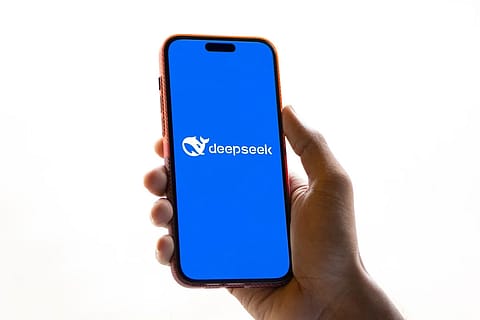DeepSeek: UBS says 'buy the dip', Jefferies flags AI ROI concerns
UBS says DeepSeek’s aggressive pricing strategy raises questions on big tech’s high capex intensity, while Jefferies flags concerns over AI's ROI as DeepSeek's low-cost models disrupt the market

Market sentiment on AI and big tech has turned negative following the initial success of China-based DeepSeek’s V3 and R1 large language models, which are reportedly trained at significantly lower training costs with deep discounts on inference.
UBS in its "Intelligence Weekly" note says DeepSeek’s aggressive pricing strategy raises questions on big tech’s high capex intensity, but its models still have many "limitations" compared to the frontier models from big tech coupled with limited transparency on training methodology.
UBS has recommended investors to "buy" the dip amid global sell-off in tech majors' stocks. "We recommend investors to stay calm and take advantage of extreme volatility through structures and buy the dip in quality stocks. Our previous study also highlighted that any undue correction in quality stocks/tech benchmarks barring a major macroeconomic event historically proved to be good buying opportunities," the global brokerage says in its latest note on DeepSeek.
On Monday, NASDAQ futures were down 3% as the DeepSeek models reportedly promised good performance at a fraction of the training and inference costs of leading frontier models. "With the recent initial success of DeepSeek’s large language AI models, investors are grappling with concerns about potential AI price wars, Big 4’s AI capex intensity, and how to navigate investments across the various layers like enabling versus application layers. With few details about DeepSeek and its business model available currently, we recommend investors to focus on the upcoming tech company results for more guidance, instead of panicking."
It says investors should closely monitor the upcoming results and take advantage of any extreme volatility through structured strategies and buy the dip in quality stocks.
Massive investment in GPUs has generated little return: Jefferies
Jefferies in its report says AI-related semi-stocks are being sold off as China's DeepSeek has developed an open-source LLM that matches the performance of GPT-4o using a fraction of computing power. "Its architecture is MoE+MLA, with high-quality parameter processing. It would prompt the AI industry to refocus on ROI. Despite DeepSeek's amazing model efficiency, it has not accelerated any AI monetisation. Re-evaluating computing power needs could cause 2026 AI capex to fall."
Recommended Stories
Jefferies says the market naturally will worry about demand growth in computing power. "We have been highlighting our concern about AI's ROI, as the massive investment in GPUs has generated little return. We have seen model improvement (at a high cost), but no concrete examples of AI monetisation that could justify the investments."
Jefferies believes DS's success could drive two possible industry strategies: "(1) It still pursues more computing power to drive even faster model improvements, and 2) refocus on efficiency and ROI, meaning lower demand for computing power as of 2026.
Positive for the smartphone industry
Jefferies says if smaller models can work well, it is potentially positive for smartphones. "We are bearish on AI smartphones as AI has gained no traction with consumers. More hardware upgrade is needed to run bigger models on the phone, which will raise costs. DeepSeek's success offers some hope but there is no impact on AI smartphone's near-term outlook."
(INR CR)
On the implications for the US-China tech war, Jefferies says China is the only market that pursues LLM efficiency due to chip constraints. Trump or Musk likely recognise the risk of further restrictions will lead to China innovating faster, it says, adding that Trump could relax the AI Diffusion policy.
What we know about DeepSeek
DeepSeek (DS) is 100% owned by a highly successful AI-driven quant fund in China, High-Flyer. High-Flyer created DS in April 2023 to focus on artificial general intelligence (AGI/LLM). V2 was launched in May 2024, with a reported cost of only Rmb2/output token. It achieved a No. 7 ranking at the University of Waterloo's LLM leaderboard. Last month, it launched V4, trained on a data set of 14.8tn tokens (13tn for GPT4-o), at a training cost of only $5.6 million.
That is less than 10% of the cost of Meta's Llama. DS also indicated V3's performance exceeded that of Llama 3.1 and Qwen 2.5, while matching GPT4-o and Claude 3.5 Sonnet. DS's architecture is based on a Mixture of Experts (MoE) and Multi-head Latent Attention (MLA). Each MoE model has ~200bn data parameters, and each query would activate only ~20bn parameters, which lowers the inferencing cost and shortens the response time. It is an open-source model, available at Hugging Face.